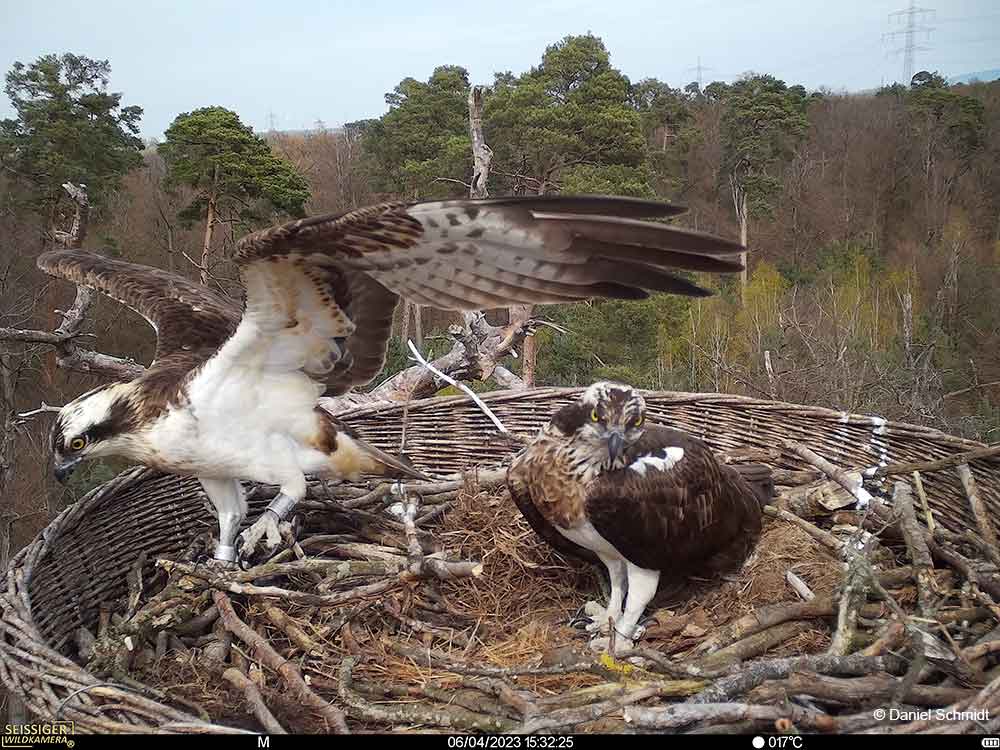After Mouche (PR4, from 2016), Plume (F02, from 2017) and Rafale (F14, from 2018), the discovery of a fourth female reintroduced in Switzerland, Chronos (ex-PS9), has been a great surprise! Named because she had a spot on the back of her head which looked like an hourglass, Chronos was identified thanks to a camera-trap on a nest platform checked by Daniel Schmidt in Baden-Württemberg, where the species has just been recorded breeding for the first time since 1907.
Chronos, just like Flamme (ex-KF6, also from 2017), has lost her blue plastic ring, so it has been a real challenge to identify her. We have also realised that in the past two years, Chronos and the same male had already bred on the French side of the Rhine, where they had 3 chicks in 2021 and 2 in 2022 – but all sadly died before fledging (predation suspected by Eagle-owl, Goshawk or Pine Marten).
This spring, they initially returned to their original nest in Alsace, but were chased away by a pair of Canada Geese. A nearby nest platform (one of 15 built along the Rhine by the LPO- Alsace and NABU-Germany with support from several partners, including Pro Pandion), could have served as an alternative. Had it not also been “squatted” by a pair of Egyptian Geese, which in turn were chased away by another pair of Canada Geese.
Faced with such exotic invasive competitors, Chronos and her partner then crossed the Rhine River to seek refuge on another platform, which they had visited last year after the failure of their second breeding attempt in Alsace. And this time they were at last successful. A first egg was laid on April 15, and on June 24 Daniel Schmidt-Rothmund ringed their two chicks and collected the SD-card from a camera trap. While checking over 2800 pictures, he noticed that the female had an unusual type of ring (with rivets), and remembered that the Swiss project had used this at times. However, he could only decrypt a few figures on it which did not match ours, before realising that the ring had actually been placed upside-down. So what initially looked like “66” turned out to be “99”, and on one of the photos, “9945” could even be read, corresponding to eight possible female Osprey released at Bellechasse.
Checking all the photos taken at the time of their release, we confirmed that only one, Chronos, had its metal ring placed upside-down (see a video of her feeding on the Bellechasse aviaries on August 7, 2017), and that she had lost her blue plastic ring PS9. Chronos was collected in eastern Germany by Mario Firla and translocated to Switzerland in June 2017. Released on July 27, she migrated on August 29. And excellent news hot off the press: both her chicks have just fledged!



